|
DRY ECOLOGICAL LATRINES
Excerpt from the publication "Sanitario Ecológico Seco" (Dry Ecological Latrine)
|

|
|
The dry ecological latrines have two chambers (A and B),
they use no water, and separate urine from fecal matter by means of the ecological toilet. |

|
| This is the way you construct a dry ecological latrine. |
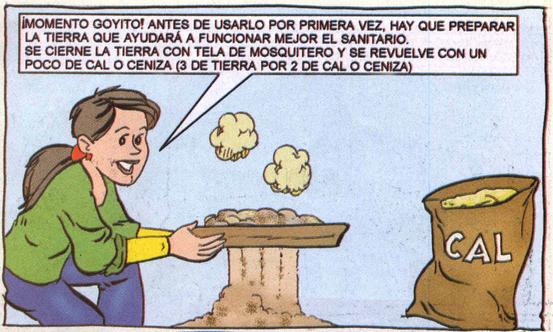
|
|
The latrine functions with a mix of 3 parts of soil and 2 parts of lime or ash (you can also use wood chips). |
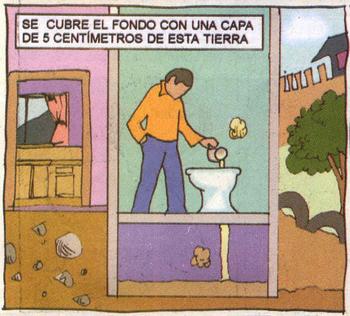
|
| The latrine is prepared with a layer of this mix. |

|
|
The ecological toilet separates urine from feces, and the urine is sent to an underground deposit filled with gravel. |

|
| After each use, a small amount of soil is dumped into the chamber. |
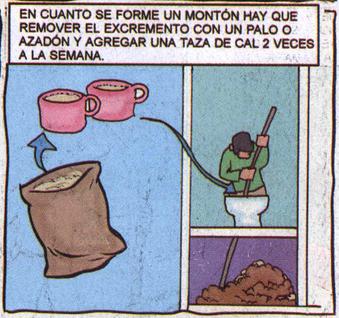
|
|
The chamber needs to be maintained in optimal conditions every so often (add a cup of lime twice a week). |
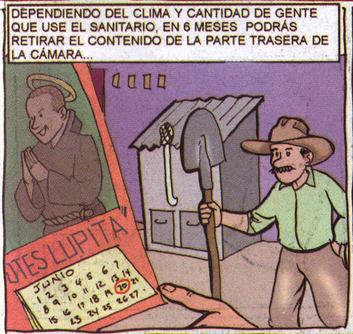
|
|
After a period of use, the A chamber rests for at least 6 months, while the B chamber is being used. |

|
|
After the B chamber has been used for 6 months or more, the humus in A chamber is removed and spread in the field. |

|
| Ventilation of the chamber is very important. |
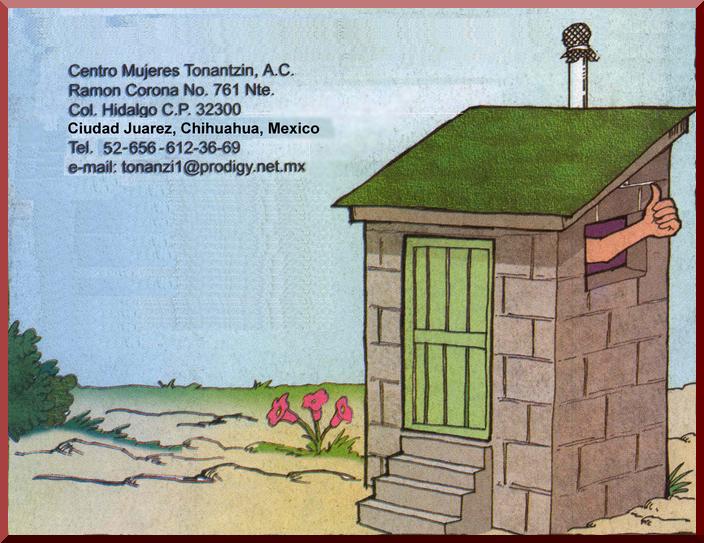
|
|
The dry ecological latrine is the practical solution to
sustainable human waste management.
"Cleaner is not he who cleans more, but rather he who dirties less." |